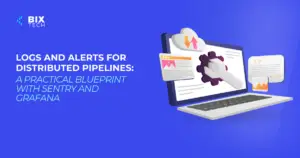Strategies for Structuring and Scaling High-Performance Data Labeling Teams

Sales Development Representative and excited about connecting people
Data labeling is the backbone of any successful machine learning project. Whether you’re building computer vision models or training natural language processing systems, high-quality labeled data is essential for model accuracy and business impact. But as organizations scale their AI initiatives, building and managing a high-performance data labeling team becomes increasingly complex. So how do you structure your team for success—and scale it efficiently as demand grows?
In this article, we’ll break down actionable strategies for organizing, managing, and scaling a top-tier data labeling operation. We’ll cover team structure, recruitment best practices, quality assurance, workflow automation, and how to maintain efficiency as your labeling needs expand.
Why Is Data Labeling So Critical?
Before diving into team building, let’s clarify why data labeling matters so much. Well-labeled data is the foundation of robust AI models. Poorly labeled datasets can introduce noise, bias, and inaccuracies, derailing even the most advanced algorithms.
For example, in computer vision, mislabeled images can cause a self-driving car’s object detection system to fail. In finance, inaccurate sentiment labels can lead to misleading market predictions. High-quality annotation ensures your models learn the right patterns from the start.
If you’re curious about where data labeling fits into the broader AI workflow, check out our guide on Unlocking the Power of Data Science in Business for a full overview.
Laying the Foundation: Structuring Your Data Labeling Team
1. Define Roles and Responsibilities
A well-structured team starts with clear roles. Here’s a typical breakdown:
- Data Labelers/Annotators: The hands-on team members labeling data according to project guidelines.
- Quality Assurance (QA) Specialists: Review labeled data for accuracy and consistency, catching errors before they reach production.
- Team Leads/Supervisors: Bridge communication between labelers, QA, and project managers, ensuring workflow efficiency and providing feedback.
- Project Managers: Oversee timelines, resource allocation, and interdepartmental collaboration.
Pro Tip
Depending on project complexity, you might also include data engineers or automation specialists to streamline processes.
2. Build a Robust Onboarding and Training Program
Scaling your team quickly is great—but never at the expense of quality. Invest in a thorough onboarding program that covers:
- Annotation guidelines and project-specific nuances
- Labeling tools and software
- Common error cases and how to avoid them
- Data privacy and compliance
Ongoing training keeps your team sharp as guidelines evolve or new data types are introduced.
Scaling Up: Recruitment and Team Expansion
1. Hire for Skills—But Also for Adaptability
While previous annotation experience is valuable, adaptability and attention to detail are even more critical. Look for candidates who can quickly learn new labeling guidelines and handle feedback constructively.
Consider including a practical assessment in your hiring process—a short annotation exercise can reveal a lot about a candidate’s fit.
2. Leverage Remote and Distributed Teams
Remote work opens up a global talent pool and enables round-the-clock productivity. Distributed teams can help you meet tight deadlines and accommodate multiple time zones, especially as your labeling requirements grow.
3. Foster a Collaborative Culture
Scaling doesn’t mean losing your team’s sense of cohesion. Use collaborative tools (like Slack, project management boards, and video meetings) to keep communication clear, celebrate wins, and encourage knowledge sharing.
Ensuring Quality at Scale
Quality assurance can become a bottleneck as your labeling volume increases. Here’s how to keep standards high without slowing down:
1. Implement Rigorous QA Processes
Have every batch of labeled data reviewed by a QA specialist. Use spot-checking, consensus labeling (where multiple annotators label the same data), and gold-standard datasets to benchmark performance.
2. Monitor Metrics and Provide Feedback
Establish KPIs such as annotation speed, accuracy rate, and rework percentage. Provide regular, constructive feedback to labelers and recognize top performers.
3. Automate Where Possible
Leverage automation to reduce repetitive tasks. For example, pre-labeling data with simple algorithms can speed up the process, allowing human annotators to focus on complex cases and corrections. Workflow automation tools can also help assign tasks, track progress, and flag anomalies.
If you’re interested in how automation and AI can further streamline your data processes, our post on AI-Driven Innovations in Software Development explores real-world examples.
Scaling Your Data Labeling Operation
1. Modular Team Structure
As your projects grow, consider organizing teams into modular “pods” focused on specific data types, languages, or annotation tasks. This allows for parallel workflows and easier management.
2. Invest in Scalable Tools and Infrastructure
Choose labeling platforms that can handle increasing data volumes, support collaboration, and offer integration with your data pipelines. Cloud-based solutions are especially effective for scaling with demand.
3. Plan for Continuous Improvement
The best teams regularly review their processes, adopt new tools, and refine guidelines. Encourage a culture of experimentation and learning—what worked for 10,000 labels may not work for a million.
4. Balance In-House and Outsourced Talent
As workloads spike, consider supplementing your core team with trusted outsourcing partners. This hybrid approach offers flexibility and cost-effectiveness, especially for short-term surges.
For more insights on building scalable, future-ready teams and infrastructures, you might enjoy our deep dive into Crafting Tomorrow’s Strategies with Predictive Analytics.
Final Thoughts
Structuring and scaling a high-performance data labeling team is both an art and a science. It demands clear roles, ongoing training, robust QA, and the right mix of people, processes, and technology. By investing in your team’s structure and focusing on quality at every stage, you set the stage for AI and machine learning success, no matter how large your ambitions grow.
With the right strategies in place, your data labeling team can evolve from a support function into a true strategic asset—fueling innovation, enabling smarter models, and driving business value at scale.
Ready to take your AI initiatives to the next level? Start by building a strong foundation—your data (and your future models) will thank you!









